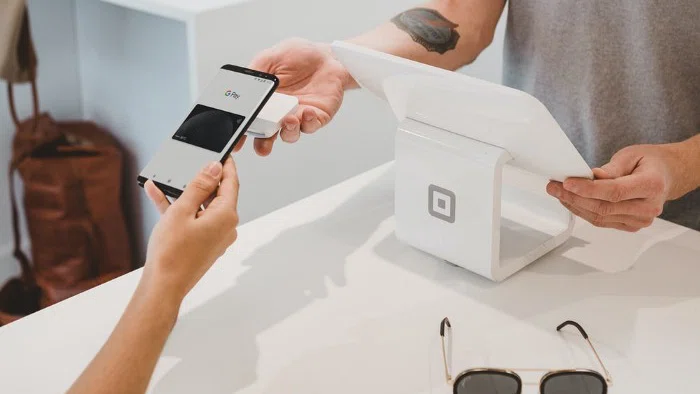Russians began to spend more money on physical products with delivery as well as digital content such as movies and music. In 2020, the turnover for online stores selling physical products has doubled from 2019, with the same results for services offering digital content. Customers are spending noticeably more on ready-to-eat meals and groceries with delivery: the average order value has grown 3.4 times in comparison with the previous year. YooMoney analysts came to such conclusions after comparing user payments at online stores and other online services working with our payment solution.
Shopping and entertainment at home
Self-isolation has changed the consumer behavior of Russians: they are spending more money online on goods with delivery or those that can be used remotely. In addition to online stores with physical products and services with digital content, the turnover has also increased for online platforms offering educational courses, trainings, and master classes this year (by 27% compared to 2019). Ready-to-eat food delivery services saw a slightly smaller increase (22%).
The turnover for online services selling airline and train tickets experienced an obvious decrease this year compared to last year: 58%. This indicator has also decreased for services selling event, cinema, theater, and museum tickets (40%).
“As a result of the 2020 lockdown, even those who had never ordered anything online tried shopping this way. People realized that you can buy anything on the Internet, and you can pay for it is conveniently and safely. New economic realities force people to choose only the necessary goods and abstain from large purchases. At the same time, the self-isolation regime stimulates the growth of consumer demand for movies, music, video games, and other digital goods,” comments Ivan Glazachev, CEO of YooMoney.
Content and education now, traveling later
Self-isolation has also affected the purchasing activity of users on the Internet. In 2020, the number of payments for services offering films, music, and other content increased by about 2.8 times compared to 2019. People began to pay more often for online education: at websites with courses, master classes, and trainings, payments increased by almost 48%.
Services selling airline and train tickets, as well as those selling cinema, theater, museum, and event tickets have also had a "low season" for this indicator. In both cases, the number of payments fell by 37% this year compared with the last year.
Buying groceries online
If we look at the average order value, the delivery services for ready-to-eat food and groceries show the largest growth, increasing from 498 rubles in 2019 to 1,681 rubles in 2020. Obviously, this is also a result of self-isolation: people prefer to order everything they need at home now, so they won’t have to stand in lines at grocery stores, The average order value for online stores selling physical goods that can also be delivered, also had a noticeable increase: by 2.1 times (to 1,833 rubles).
Despite the growth in the number of payments for digital content, users are spending less on it per one purchase: the average order value has decreased by 28% (to 536 rubles) this year compared with the last year. This indicator fell even more for services that sell airline and train tickets: by 33% (to 13,562 rubles).
“In the outgoing year, e-commerce has become a powerful driver for the development of business logistics in the country. Lockdown pushed both people and companies to new solutions: for example, taxi drivers took on the duties of couriers, and the express delivery services began to actively develop on the market making it possible to largely solve the classic logistics problem, the last mile delivery i.e. taking an order directly to the customer's front door. Delivery from the sender to the intermediate terminal used to take several days, and so did the delivery from the terminal to the recipient. Everything is happening much faster now. So far, this is relevant only for megapolises, but over time it will spread to other big cities,” notes Ivan Glazachev.
Which payment methods are used
Russians began to more often pay via Internet banking, bank cards, and e-wallets. This year, compared to the previous year, the number of payments via such methods has increased by 22%, 17%, and 4%, respectively. If we compare he usage of methods, then 66% of payments were made with bank cards, 13% via contactless payment systems (for example, Apple Pay and Google Pay), 11% via Internet banking, 9% via e-wallets.
In terms of the turnover of payments made by Russians, contactless payment systems showed the largest growth: 2.1 times in 2020 compared to 2019. Nevertheless, in terms of turnover, bank cards still have the largest share of 77%. Contactless payment systems accounted for 10% of the turnover, e-wallets for 7%, and Internet banking for 5%.
Business is moving online
Self-isolation has had a noticeable impact not just on buyers, but also on the Russian business: more and more companies and entrepreneurs are moving onlinie. In 2020, 35% more online platforms accept payments via YooMoney than in 2019. The total turnover at such platforms via YooMoney has increased 61% compared to 2019.
With the help of YooMoney, companies and entrepreneurs can both accept online payments and use various services for business. Among them is an invoicing service that allows sending invoices to customers, for example, by email or via text message. In 2020, payments on such invoices had a 20% increase compared to last year.
“2020 was a turning point for business. Those who thought about going online with sales but didn’t think they were fully ready were now forced to do so. Those who didn't even think about going online had to learn how to do so, too. Online sales have become a must for business, a point of parity, regardless of industry. All this led to a significant number of new services joining YooMoney, a restructuring of business models, and the active use of social networks for the sale of goods and services. Lockdown has affected companies of all sizes, and that fact has a positive side. Small and medium businesses are now competing successfully with large companies due to the fact that, on the Internet, they can be closer to the customer and can better understand his needs. Moreover, social media, instant messengers, and other online platforms are relatively inexpensive channels of sales and communication with the audience,” says Ivan Glazachev.








